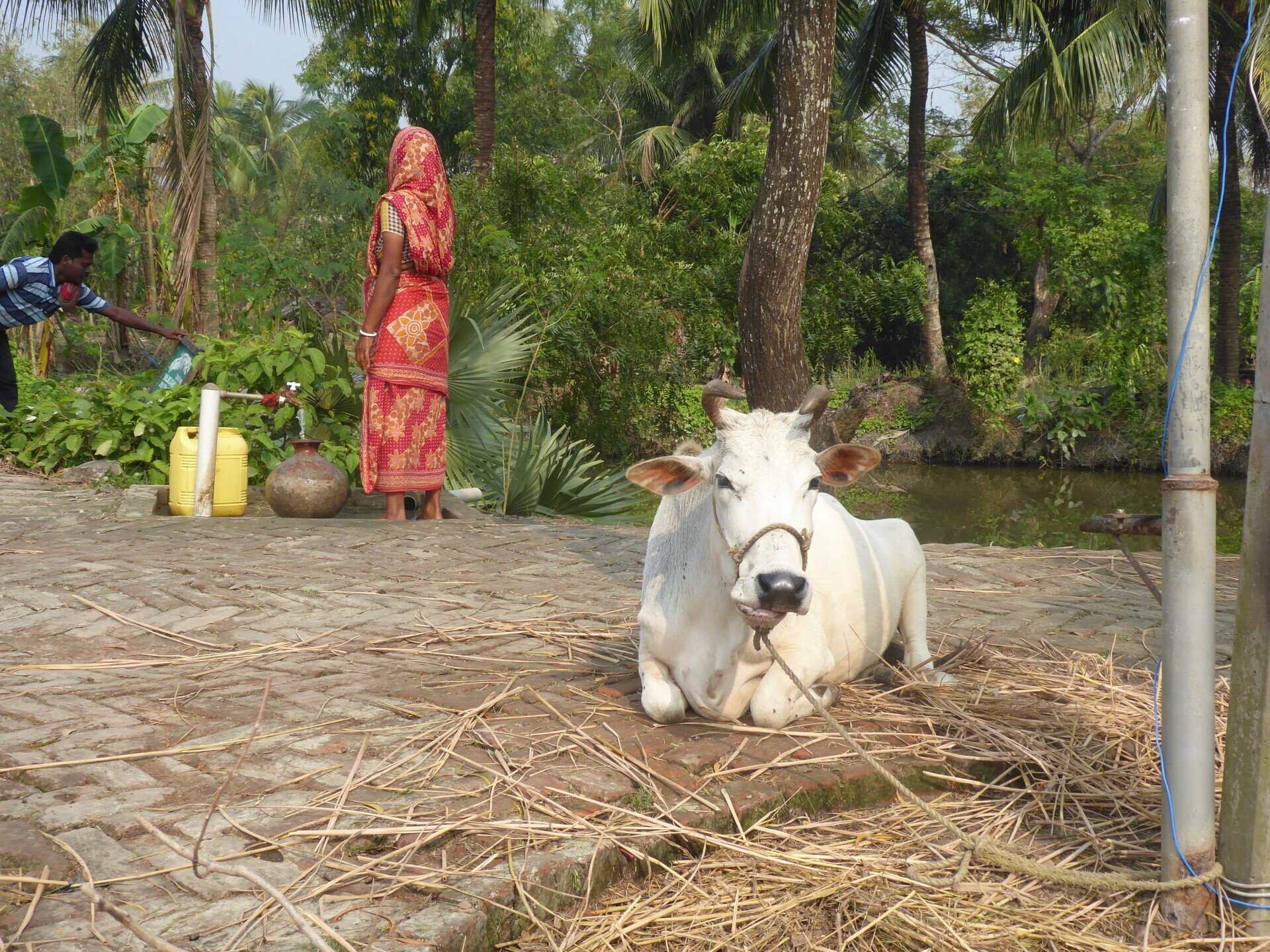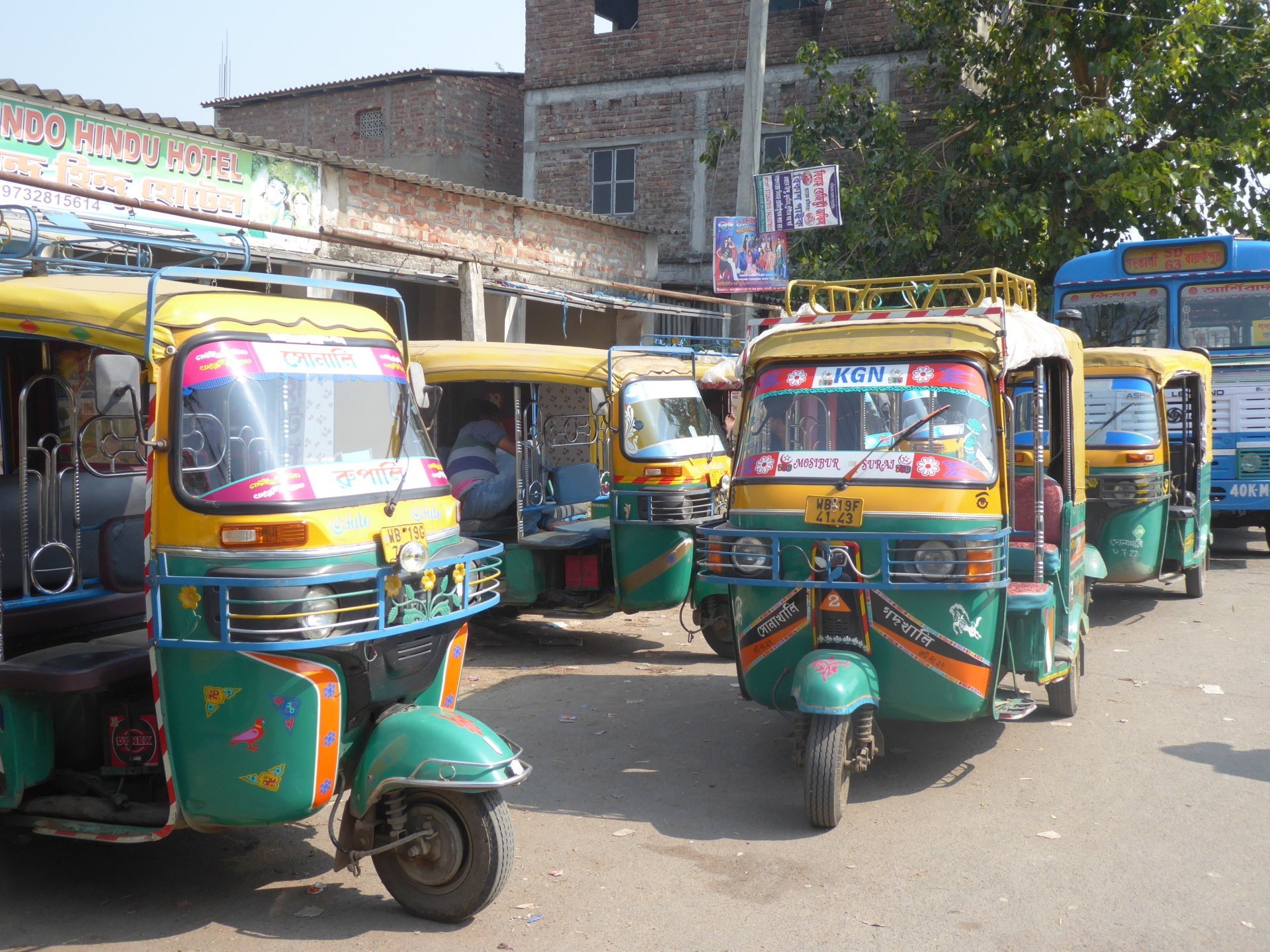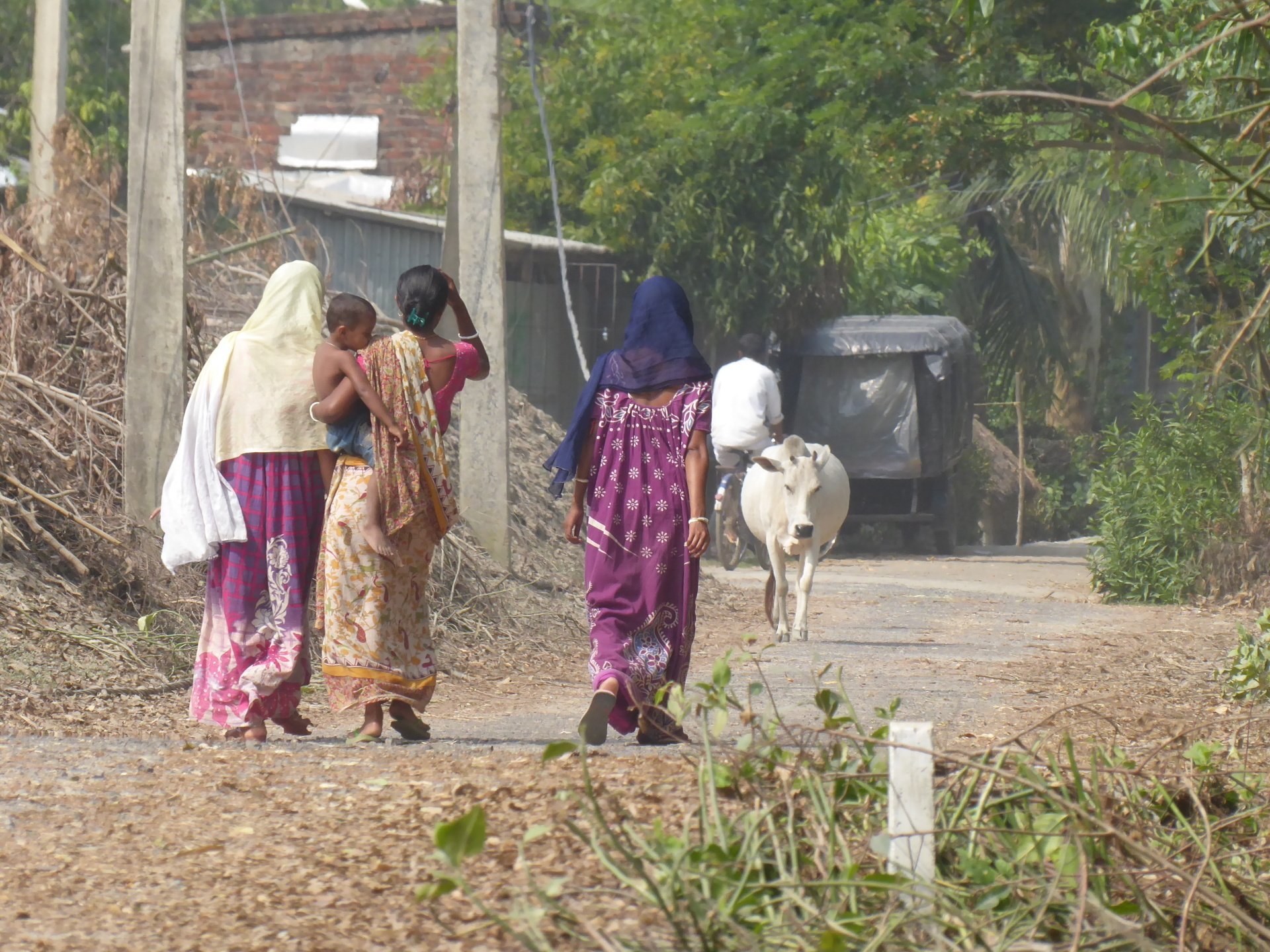Scoping Trip to the Sundarbans, India
Author: Heather Moorhouse, Lancaster University
November 2019 saw UK and Indian partners embark on the final scoping trip of the Living Deltas Hub. Our wonderful Indian partners Sumana Banerjee and Tuhin Ghosh from Jaidavpur University, Kolkata, organised visits to sites across the Indian Sundarbans; the world’s largest mangrove ecosystem to meet local officials and delta dwellers and explore potential locales for the different work packages of the Living Deltas Hub. Ultimately, this trip was to assess how and where our trans-disciplinary research can best be focussed to help understand and improve the socio-ecological resilience of the Ganges-Brahmaputra-Meghna (GBM) delta, where the Sundarbans can be found.
The Sundarbans forest is named after the Sundari species (Heritiera fomes) of mangrove tree, which dominates the reserve and in Bengali is literally translated as “beautiful forest”. It spans from the Hoogly River in India’s West Bengal to the Baleswar River in Bangladesh, formed as part of Ganges, Brahmaputra and Meghna river confluence. It is home to a rich array of wildlife, notably the endangered Royal Bengal Tiger; a fearfully respected predator who remained out of sight, but likely had eyes on a group of unwitting Living Deltas partners as they cruised around the islands and estuarine/river networks of the delta.
We watched a local performance of the story of Bonbibi “the goddess of the forest” who protects locals from the dangers of the forest, and were taught bird identification by a Forest Ranger. Did you know there were eight different species of kingfisher found in the Sundarbans? We were lucky enough to spot 3, alongside the prehistoric-looking lesser adjutant stork, kites, egrets, herons and more. It really is a birders paradise. Salt water crocodiles, monitor lizards and rhesus macaque monkeys were also spotted basking and foraging in the tidal mudflats. Personally, I was pleased we did not come eye to eye with any snakes especially the infamous king cobra. The great spotted PI Andy Large was also seen hand-filtering water samples and sampling the local tipples.
Agriculture and fishing are important industries here. Rice paddies are found close to the villages built behind river embankments. Shrimp aquaculture is a damaging environmental practice in the region, widely known for decimating forest habitat and soil and water quality rapidly. Boats were seen in the main river channels harvesting the larvae for such farms. Local subsistence fishing from domestic ponds and the shore is practised, as well as small wooden boats occupied by up to 4 fisherman who fish for a few days at a time. Permits are required to go into the forest proper to fish and collect Sundarban Honey (which has a unique delicious flavour) and are only available at certain times of the year on a first come first served basis. Trespassing into the forest to fish is common and evident, involving smaller wooden boats entering the fenced off smaller creeks and channels of the forest. Such activity has increased risk of tiger and crocodile attacks from being so isolated and close to the shore. Larger container ships and boats piled with fly ash for construction and refuse for disposal make up the boat traffic of the larger river channels.
As with delta dwellers in the Mekong, Red River and the GBM-Bangladesh region, the connection of the Sundarban communities to their local natural environment is a close and tangible one, in a way that many in urbanised and developed parts of the globe have become removed. Villages here typically have a small plot of land for vegetables, sometimes a few wildfowl, and goats and cows are found wondering around or tied up. Each house will often have a domestic pond for water uses such as bathing and washing, with often a single hand-pump using groundwater supplying drinking water for the whole village. These water sources are susceptible to intrusion from saltwater from over-abstraction and storm surges, and can lead to serious health issues in particular for women and children.
When we arrived, clean up was ongoing following the recent Cyclone Bulbul, which had just hit West Bengal (as well as Vietnam and Bangladesh), bringing storm surges, heavy winds and rains. We saw building and crop damage, and trees that had fallen in domestic ponds. The consequent decay of organic matter removes oxygen from the water in the ponds, leading to suffocation of fish, often stocked for personal consumption and so, loss of food supplies. Further, large inputs of organic matter can alter the chemistry of the water and cause itchy skin to bathers. The Sundarbans provide natural coastal protection to communities living here, forming part of the focus of Work Package 4 whose aim is to characterise socio-ecological tipping points.
Such extreme events have been pivotal in driving social, economic and political change. In 2009 Cyclone Aila caused catastrophic loss to life and livelihoods. “Before Aila” and “after Aila” are common phrases used when discussing recent environmental change. We saw multi-purpose cyclone shelters used to house livestock and communities during such tropical storms.
As part of Work Package 3, we hope to characterise the water quality of the wetlands within the deltas through monitoring, modelling and using lake sediments. In doing this, it becomes easier to establish when, what, and if there has been any negative water quality change, which can thus, better inform management measures. As freshwater scientists finding themselves on a boat, it goes without saying we couldn’t stop ourselves from taking several measurements of water chemistry and biology. Such samples and sites within the river channels and confluences will form part of the GBM monitoring network, which will help better understand how water quality changes throughout the year with the different monsoonal periods.
Our trip not only allowed us to see first-hand the multiple environmental pressures acting upon the delta but conservation and green initiatives which are helping to improve delta livelihoods. We visited a solar panel farm and saw individual solar panels on rooftops, which allow energy generation off-grid. We had to jump out of the path of teenage girls and boys cycling to school, evidence of the “Sabuj Sathi” initiative, which gives schoolchildren from the 9th to 12th class bikes to get to school. We talked to a district governor who had developed a pilot project within the Gosabi block area of the Sundarbans to employ young people to collect refuse for biogas production - the region is no exception to the global challenge of plastic pollution. On our final day, we visited a mangrove tree nursery and a rescue centre for injured mammals of the forest. It is fit to say we all look forward to returning to the “beautiful forest” shortly.










